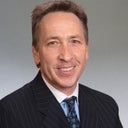Posted underSMAS Facelift q&a
M
meeranje58Jun 18, 2015
Answers (10)
From board-certified doctors and trusted medical professionals
Answered on Feb 28, 2017
Answer
Dr. Martin Jugenburg, MD

Dr. Martin Jugenburg, MD
Certified Plastic Surgeon
Answer
Dr. Earl Stephenson, Jr., MD, DDS, MBA

Dr. Earl Stephenson, Jr., MD, DDS, MBA
Board Certified Plastic Surgeon
Answer
Dr. John J. O'Brien, MD

Dr. John J. O'Brien, MD
Board Certified Plastic Surgeon
Answer
Dr. Bryson G. Richards, MD

Dr. Bryson G. Richards, MD
Board Certified Plastic Surgeon
Answer
Dr. William Portuese, MD
Dr. William Portuese, MD
Board Certified Facial Plastic Surgeon
Answer
Dr. Steven Wallach, MD
Dr. Steven Wallach, MD
Board Certified Plastic Surgeon
Answer
Dr. Francis R. Palmer, III, MD (retired)
Dr. Francis R. Palmer, III, MD (retired)
Board Certified Facial Plastic Surgeon
Answer
More SMAS Facelift Questions
See all SMAS Facelift Q&AWE SEND PRETTY
EMAILS
What’s trending? Who’s turning heads? Which TikTok myths need busting? We’ve got you. No fluff, no gatekeeping—just real talk. Get our free, unfiltered newsletter.

